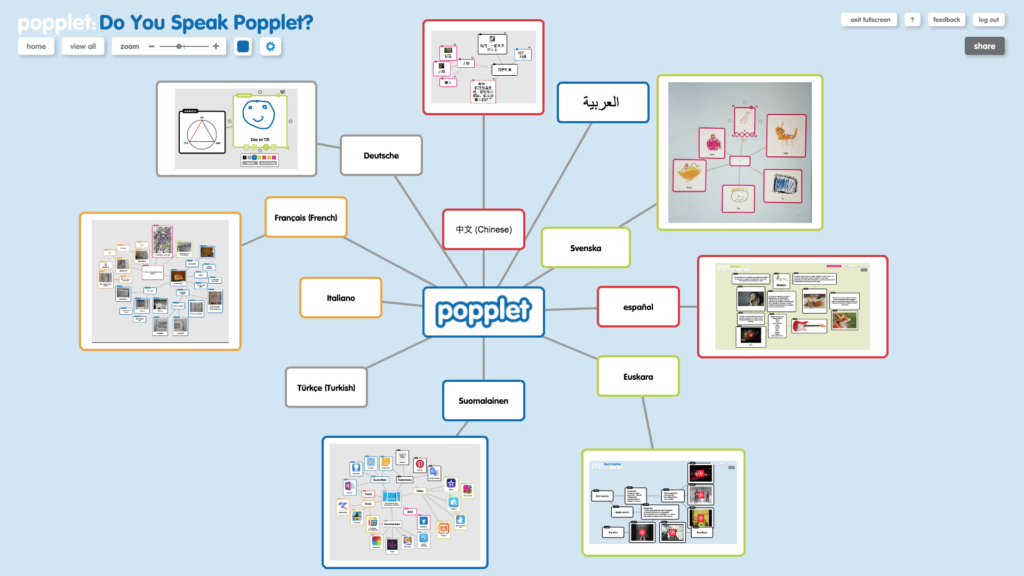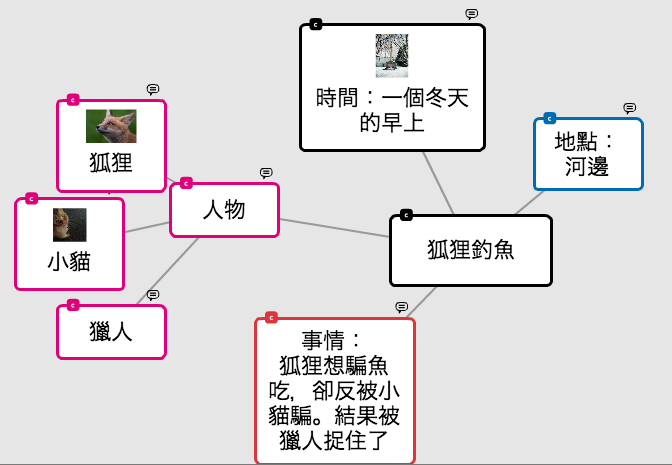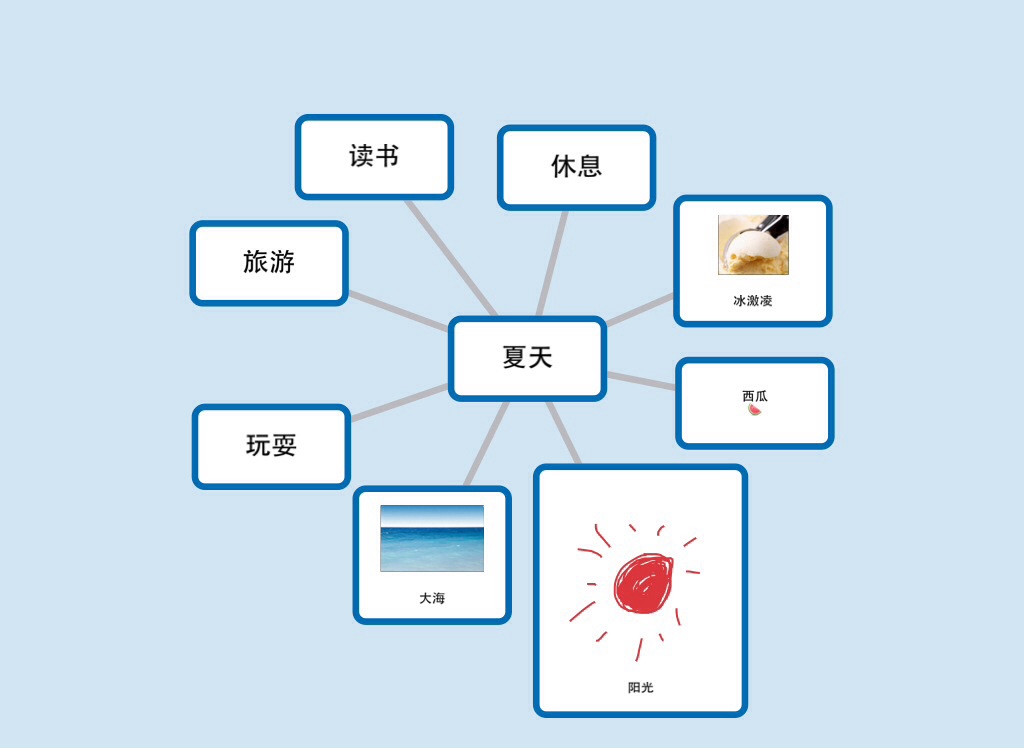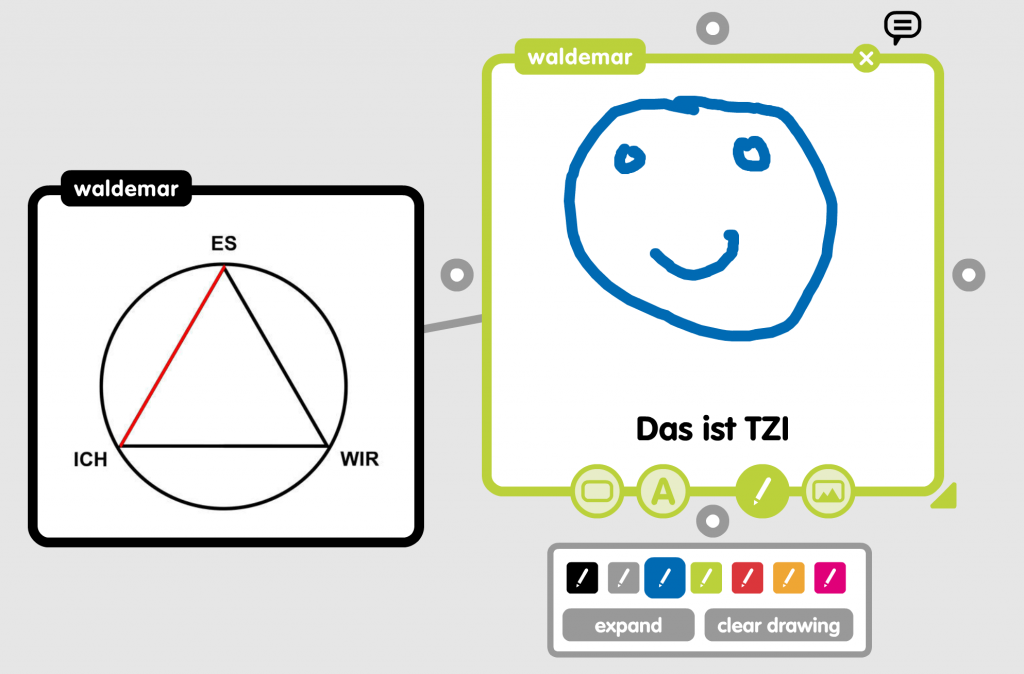With the exception of Chinese (Mandarin), English is the world’s most understood language. Unlike Chinese, approximately two-thirds of those who communicate regularly in English, are using it as a second language. The idea for Popplet was conceived somewhere around the New York area, so English seemed like the natural choice for the app and for our blog. However, the global reach of Popplet and the incredibly diverse nature of our user base has surpassed all expectations. What does it all mean?

Popplet’s popularity and recognition initially began in the school system of the USA, however, Popplet almost immediately earned a global reputation as a quality mind-mapping tool with many uses. Popplets created in a multitude of languages began appearing on Twitter, Facebook, and on websites and blog posts from all over the world. Chatter was truly multilingual! Popplet quickly gained traction in areas other than education: business, design, genealogy, medicine and many more. To meet this multicultural explosion, we brought on a multilingual support team and quickly added a language feature to facilitate the addition of languages with non-Latin based script such as Japanese, Korean, and Hebrew to popplets.
Thousands of popplets are shared openly every week: in Public Popplets, Twitter, Facebook Pinterest, and on personal and community blogs. Our support teams and technical staff also receive thousands of emails and messages: many of these Popplets and messages are in languages we know and understand, more than occasionally though, we are still surprised.
To give you some idea of worldly-wise our humble app has become, we thought we’d share a few international Popplet creations.
中文 (Chinese)
Popplet’s visual style makes it perfect for languages like Chinese, where symbols tend to represent words. An example in English might be the good old dollar sign, “$” – most people know what that means! Popplet is very much alive and active in The People’s Republic – we know this from the messages we receive from the good people of China. Twitter and some other social media sites are unavailable in The People’s Republic, which may explain why we don’t see any work directly from there. In saying that, we do see a lot of Popplet work in Chinese from Singapore, Hong Kong, Malaysia and international Chinese schools where Mandarin is the first language.
A writing exercise about the Chinese New Year from ICT Teacher, Claudia Lee’s students, resulted in this popplet:

And this popplet about summer was created and published by Chinese For Kids, a popular website “designed and developed by a teacher for kids with the goal to provide a window for Chinese Mandarin learning”.

And finally, English/Mandarin popplets about food, hobbies, and activities from See Wen Lim’s students, who attend the Help International School in Malaysia:
Categorising the vocabulary into "food" and "hobbies/activities" using @poppletny ??? #his_learning @HISEdTech @HISPriMandarin pic.twitter.com/BV83XnFrDA
— See Wen 老师 (@seewenlim) May 26, 2017
Español (Spanish)
Coming a not so close second to Chinese with an estimated 436 million native speakers in the world (less than half the number of native Mandarin speakers), Spanish is the first and second language of a great many Popplet users. It is the most widely used language of the work shared in Public Popplets. Popplets in Spanish from North and South America and even no small number from Spain itself are commonly seen on Twitter, and Facebook. Here’s one about La Música from Vanesa that we took straight from Public Popplets:
Si estás buscando ideas en español, visita a Public Popplets!
Looking for instructions? The well-regarded educational Spanish language resource website for teachers and students Tiching, recently republished this highly-read article.
We love this beautifully simple popplet work shared by Flipped Primary:
Otro mind map realizado voluntariamente por un alumno de mi tutoría, esta vez con Popplet #meencantanmisalumn@s @Estar_Asalvo @CEFIREdeElda pic.twitter.com/h5FUVAvkbT
— Flipped Primary APP (@flipped_primary) October 10, 2017
Suomi (Finnish)
From the considerably warmer climes of most Spanish-speaking lands to a far chillier place, Finland. The journey to and from the classroom might be more challenging (some Finnish schoolchildren ski to school), but the Finnish education system is consistently rated one of the best in the world. They also like using Popplet in Finland as this tweet from, Anne Rongas, Technology Educator and “Gardener of Ideas” shows:
#opehommat Mitä #iPad-äppejä vähintään peruskoulun open palettiin syytä ladata? Alustava kooste https://t.co/Op1CV9V17S #finnedchat pic.twitter.com/3YRzUdlBuN
— Anne Rongas (@arongas) May 6, 2017
Français (French)
No map of le monde, or blog post, or anything international would be complete without the French language, for so long the world’s lingua franca. Spoken widely in at least five European countries, it’s also spoken in Africa, a considerable chunk of Canada, The Caribean, Polynesia and even in the United States: formidable! Philosophy, freedom, fashion, art…much has been achieved by French speakers. Below, Cindy Beron’s students from the Collège Victor Hugo, Bourges, made a Popplet of their visit to an exhibition of the famous French art collection of Jean de Berry:
Voici notre carte mentale sur les tweets de l’exposition de Jean de Berry. @cdupuy5 #Twittville pic.twitter.com/4BRPrhZw48
— Collège Victor Hugo Bourges (@ULISVH18) December 5, 2016
….and here, are examples of Popplets from “les élèves” about how to use Twitter:
Les élèves de @ULISVH18 ont réalisé des cartes mentales sur #Popplet : "Comment bien tweeter ?" @cdupuy5 Visualisation graphique de l'info. pic.twitter.com/DaVAd72gIi
— Cindy di Pizzo (@CdiPizzo) December 16, 2016
Svenska (Swedish)
Sweden is not as well known for its artists as the France (which country is?), nonetheless, Ammi Lönnmo’s students put the Popplet drawing tool to full effect whilst working on their popplets about T-words:
T-ord och 10kompisar i #Popplet #1a gillar det! #runbacka #solskol pic.twitter.com/cfFLij4C5m
— Ammi Lönnmo (@AmmiLonnmo) September 28, 2017
Swedish has about 10 million native speakers, with 5% of them living next door in Finland. A great many cool things have come from Sweden: the phenomenally successful pop group Abba, super tennis player Bjorn Borg, immensely popular dark literature, Ikea, and Vikings! – to name but a few.
Italiano (Italian)
Like Spanish, Italian is a Romance Language, with its origins in Latin, the language of the mighty Roman Empire. Latin was so predominant, that its influence is still very apparent in modern English. We haven’t seen any popplets in Latin, but we are sure they exist! Anyway, as expected Popplet work in Italian mostly comes from Italy. However, we also see examples from Switzerland, Argentina, Uruguay and of course the United States. The following video tutorial was posted on our Facebook page by the Italian education website Technologiaduepuntozero:
Euskara (Basque)
Almost all languages, living and dead, are in some way connected to each other like people are. Interestingly, there are a few that aren’t. Many Language Isolates are long gone or at least endangered and are mainly of interest to academics. There are one or two that are just as vibrant today as they were when they were first uttered. Basque is one of them. Spoken by a community, which spans the mountainous regions of Spain and France, Euskara is one of Spain’s four officially recognized languages. A thriving language, which stubbornly evades all questions as to its origins. Below we can see a group of teachers from the Salesianos Donostia School, San Sebastian, being put through their paces with apps like Popplet:
Irakasleok ikasle bihurtu gara gaur!#bringOutTheBest #FlippedLearning #kahoot #popplet #classdojo #edpuzzle pic.twitter.com/CVTdaSOpJt
— SALESIANOS DONOSTIA (@SALESTARRAK) June 28, 2017
Basque blogger Alex, posted an amazing series of modern music Popplets on his school project blog. We especially liked this one featuring music from the 1960’s:
Türkçe (Turkish)
Turkey has long been considered as a gateway, centrally positioned as it is between Europe and North Africa. Although it uses Latin script, spoken Turkish sounds more like the languages of its Arabic speaking neighbors. The reason for this is that written Turkish changed from an Arabic/Persian type alphabet to a Latin one in 1928. We see a lot of Popplets from Turkey, and we really like this fast and furious YouTube tutorial from Seda Kocaman of Istanbul University:
Web tabanlı Popplet programında kavram haritası nasıl oluşturulur?➡ https://t.co/HWorhiXAuP
— Seda Kocaman (@seda_kocamann) March 11, 2017
What an excellent video. If it was a little bit too intense (we liked it) here’s another from twitter feed Teknolojik Öğretmen:
Popplet Uygulama Örneği – Popplet ile zengin kavram haritaları oluşturabilirsiniz. https://t.co/n1Dv0dELqL @egitimcantasi pic.twitter.com/RMuzo3mSq1
— Teknolojik Ögretmenler (@teknogretmenler) July 24, 2017
العربية (Arabic)
Arabic is an official language in twenty-eight countries, all of them in North and Central Africa. It is the first language of many communities throughout the world. As the language of the Quran, the central text of Islam, its impact on the world has been and still is monumentally important. It’s no surprise then that Popplets from Arabic teachers and students are prevalent on our social media pages.
Thank you very much to Amani ALTurki, a teacher from Saudi Arabia for sharing about Popplet Lite on Twitter
Popplet lite
برنامج سهل الاستخدام لعمل خرائط المفاهيم .. مناسب لتدريب الطلاب/ات على تلخيص أفكارهم وترتيبها?? pic.twitter.com/Gq7nBS5Pne— اماني التركي??? (@amaniaalturki) December 11, 2016
And for showing us what can be done when you combine Popplet with other apps, Pic Collage in the tweet below:
فن استخدام البرامج?
استخدام برنامج #PicCollage وبرنامج #Popplet لدرس ال3D Shapes الأشكال الثلاثية الأبعاد ?? pic.twitter.com/5W0ZZndBVe— اماني التركي??? (@amaniaalturki) February 8, 2017
Computer Science teacher Nuha Alodan, also from Saudi Arabia has this to say: “The Popplet application or any Mapping application is used to display information in a great and neat way, by compiling and storing lesson information in a mental map”:
https://twitter.com/Nuha_AO/status/890860158364119040
Deutsch (German)
German is one of Europe’s oldest and culturally richest languages (due in no small part to migration) with over 100 million native speakers worldwide. An official language in six countries, there are well over a million native speakers in North America and more than 5 million native speakers in South America, mainly in Brazil. The Popplet blog that you are reading now is very popular in Germany. And it’s partly thanks to articles like this one: Mindmap – 5 Tools zum Sammeln und Brainstormen im Unterricht, from Waldemar Schmidt.

The world is a big place with a lot of people and we are all different – but not so different that we cannot get together and share common hopes, dreams, and goals. New technologies like Popplet aren’t responsible for this; people are. Technology has helped though, and this is evident when we see popplets created in every part of the world, in every language imaginable. Never before have people been able to share and learn so much from each other and we feel pretty happy that Popplet is a little part of that.
Don’t worry if you didn’t see your language featured here, simply share your popplet with the Popplet community on our Twitter, and Facebook Page. We might even add your work to this article. Talk to Popplet, talk to the world.